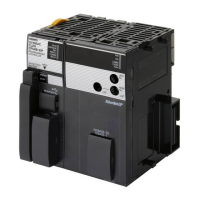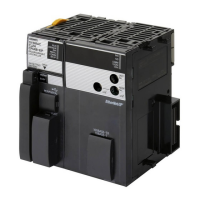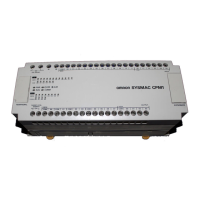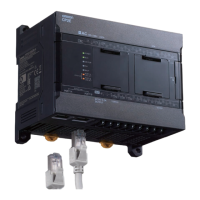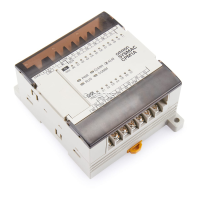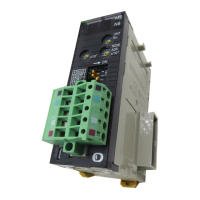469
3. Instructions
CS/CJ/NSJ Series Instructions Reference Manual (W474)
Floating-point Math Instructions
3
Floating-point Math Instructions
(2) Non-normalized Numbers
Non-normalized numbers express real numbers with very small absolute values. The sign bit will be 0
for a positive number and 1 for a negative number.
The exponent (e) will be 0, and the real exponent will be –126.
The mantissa (f) will be expressed from 1 to 2
23
– 1, and it is assume that, in the real mantissa, bit 2
23
is 0 and the binary point follows immediately after it.
Non-normalized numbers are expressed as follows:
(–1)
(sign s)
× 2
–126
× (mantissa x 2
–23
)
Example
Sign: –
Exponent: –126
Mantissa: 0 + (2
22
+ 2
21
) × 2
–23
= 0 + (2
–1
+ 2
–2
) = 0 + 0.75 = 0.75
Value: –0.75 × 2
–126
(3) Zero
Values of +0.0 and –0.0 can be expressed by setting the sign to 0 for positive or 1 for negative. The
exponent and mantissa will both be 0. Both +0.0 and –0.0 are equivalent to 0.0. Refer to Floating-point
Arithmetic Results, below, for differences produced by the sign of 0.0.
(4) Infinity
Values of +∞ and –∞ can be expressed by setting the sign to 0 for positive or 1 for negative. The
exponent will be 255 (2
8
– 1) and the mantissa will be 0.
(5) NaN
NaN (not a number) is produced when the result of calculations, such as 0.0/0.0, ∞/∞, or ∞–∞, does not
correspond to a number or infinity. The exponent will be 255 (2
8
– 1) and the mantissa will be not 0.
Note There are no specifications for the sign of NaN or the value of the mantissa field (other than to be not 0).
0 0 0 0 0 0 0 0 0 0 1 1 0 0 0 0 0 0 0 0 0 0 0 0 0 0 0 0 0 0 0 0 0
31 30 23 22 0
